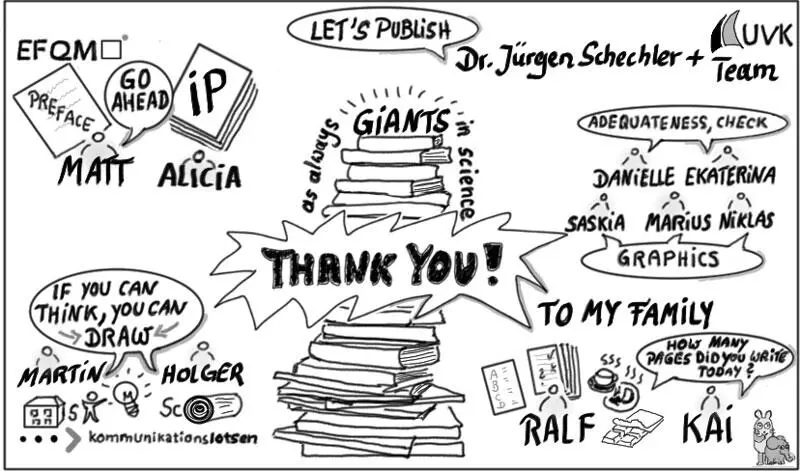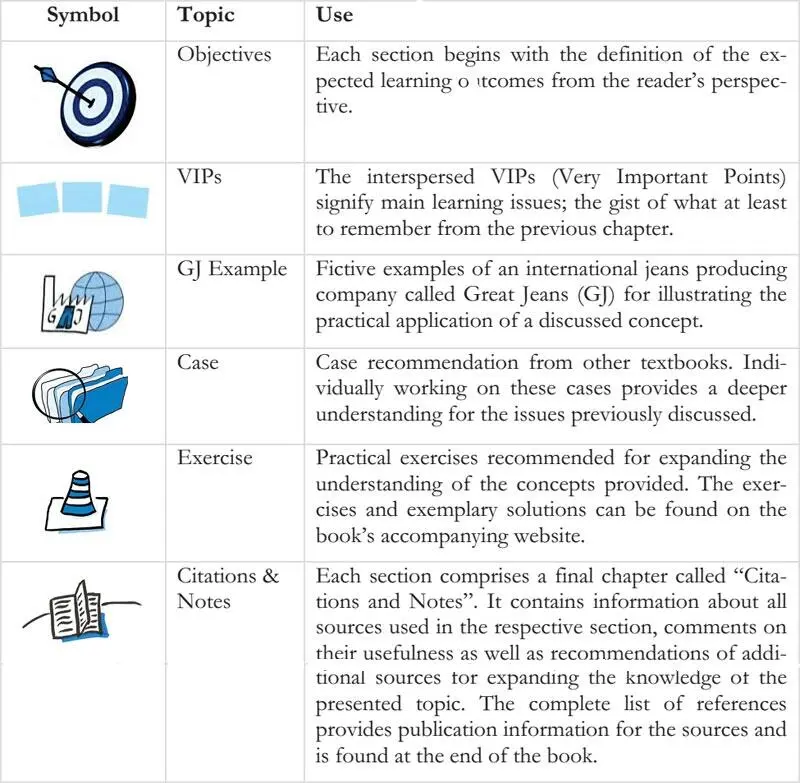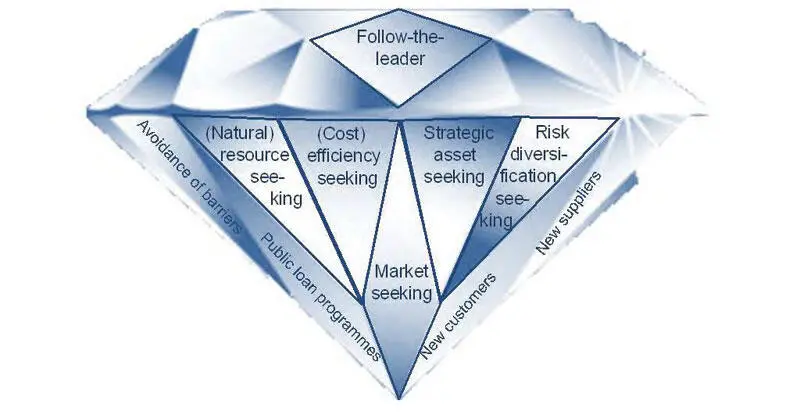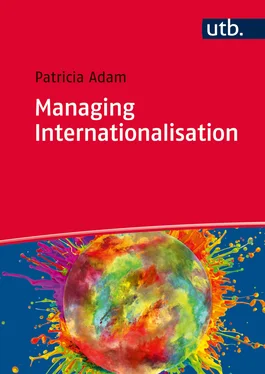
Readers are able to navigate effortlessly through the book and its supplementary information. They understand the concept of globalisation and related consequences from an organisational perspective. Readers also know how to correctly name and address motives for internationalisation processes and how to recognise their interdependencies. Forces for global integration and local responsiveness are familiar and different forms of internationally operating organisations can be distinguished. The contribution of holistic management models to supporting leadership decisions and activities is recognised. The most important international models can be classified. Readers are familiar with the general approach of the EFQM Excellence Model including its fundamental concepts and RADAR logic.
Learning objectives are always followed by a visual overview of the main issues covered in the respective section. Such a graphic is called a concept map. The map created for chapter 1 is supplied in Figure 1-1.

Figure 1-1: Concept Map “Introduction and Overview”
| 1.1.1 |
How to Use This Book |
This book is meant for everybody who seeks well-founded and practical advice on how to manage the internationalisation process of an organisation. It covers the internationalisation issue from a top management perspective and builds upon established and state-of-the-art methods, using a globally recognised holistic management model – the EFQM Excellence Model - as guidance. Therefore, it caters to the needs of different groups of readers:
Practitioners working for and with organisations that are on their way to becoming truly international,
students of business, economics and related sciences that want to prepare themselves for doing exactly that in their future career and
all people planning or conducting the implementation of a holistic management model (EFQM Excellence Model or Baldrige) in their organisations.
In order to facilitate the use of this book, supplementary information is provided for further illustrating the theoretical concepts discussed. This additional information is marked by distinct symbols, as listed in Figure 1-2.

Figure 1-2: Symbols Used for Special Information Employed Throughout this Book
The principles presented in this book are equally relevant for all kinds of organisations - companies, individual enterprises and non-profit organisations alike. Therefore, the term organisation instead of company is used consequently. However, in some parts for easier understanding the terms “business” or “business sectors” are utilised as many readers might find it easier to link the purpose of an organisation to the term “business” than to a more general description. In the sense used, non-profit organisations also have a business (or mission or duty) they pursue – which could be the business to save the environment or the business to protect people from injustice. The employment of classical management terminology should not distract from the fact that the principles and tools explained here are relevant for all imaginable international management situations.
| 1.1.2 |
From Gradual Globalisation to Transnational Organisations |
Globalisation, understood as the worldwide integration of cultures, political systems, markets, industries and economies, is a determinant in the management of contemporary organisations. Whether an organisation decides to join the international competition or decides to stay out – the issue has to be raised. A google search of the term “globalisation” produces presently 12 million hits within less than one second, which clearly illustrates its current relevance.
Reasons and motives for internationalising an organisation are multi-faceted, as illustrated in Figure 1-3. For most organisations the primary motive is still the search for markets to ensure sustainable growth. Underlying reasons might be the (assumed) existence of attractive customer segments, demand for the offered products and services, a generally huge market size or an attractive market growth. Sometimes, the decision in favour of entering a new market is paired with a requirement to avoid the related tariffs or other trade barriers and to partake in public loan programmes offered by the respective government. In this case, opening new or relocating existing production sites is a logical consequence of the original market-seeking intent. Another important motive that appears individually or agglomerated is the necessity to ensure the availability of raw materials or other crucial and scarce resources. Cost-efficiency seekers try to establish production facilities in locations that provide essential resources at low cost (for example cheap labour costs), ensure a shorter time-to-market through cutting the distance to the customers or realise faster production cycles due to the immediate availability of efficient and good suppliers. Strategic asset seekers internationalise their business because they have a high need of well-trained people with special skills (for example in finding innovations) or are looking for international partners to complement their own product portfolio or research activities. Pushing internationalisation processes out of a risk diversification perspective is a motive on the rise due to an increased emphasis on risk management. Finally, many organisations feel obliged to mimic the international actions of their main competitors, which is labelled follow-the-leader motive. 1

Figure 1-3: Multi-Faceted Motives for Internationalisation Processes 2
When the need for internationalisation is recognised, organisations have different possibilities to start the internationalisation process. The classical Uppsala Model from Johanson and Vahlne (1977) assumed that companies build up their presence in foreign markets incrementally along typical steps. This establishment chain was discovered based on case studies of Swedish companies and considered on the one hand the continuing acquisition and use of knowledge about the foreign market and on the other hand the commitments to the foreign market. The chain starts with irregular export activities and gradually evolves to the use of independent representatives, the founding of own sales subsidiaries and finally the establishment of a manufacturing plant in the foreign country. The authors observed also that the process was usually started in markets that had many common characteristics with the home market and that the international establishment took longer in case the knowledge of the target market was very low, or in other words the market was deemed exceptionally foreign in nature. From these observations they derived the concept of “psychic distance”, defined as the sum of factors inhibiting the flow of information to and from the foreign market. These factors are supposed to be mainly based on differences in culture, language, business practices and industrial development. An organisation naturally tends to start international activities in a market with low psychic distance, for example in a neighbouring country using the same language where the organisation feels to have a good knowledge of. Gradually, market knowledge of other countries further along the psychic distance chain will be collected. If the endeavour of internationalisation was implemented successfully in the first market, the internationalisation will be extended to the next country along the psychic distance chain. 3According to this theory, a German company would be expected to start with exporting its products to Austria followed by the later establishment of a sales subsidiary there. The next internationalisation step could then be exporting its products to Denmark or the Netherlands.
Читать дальше
















